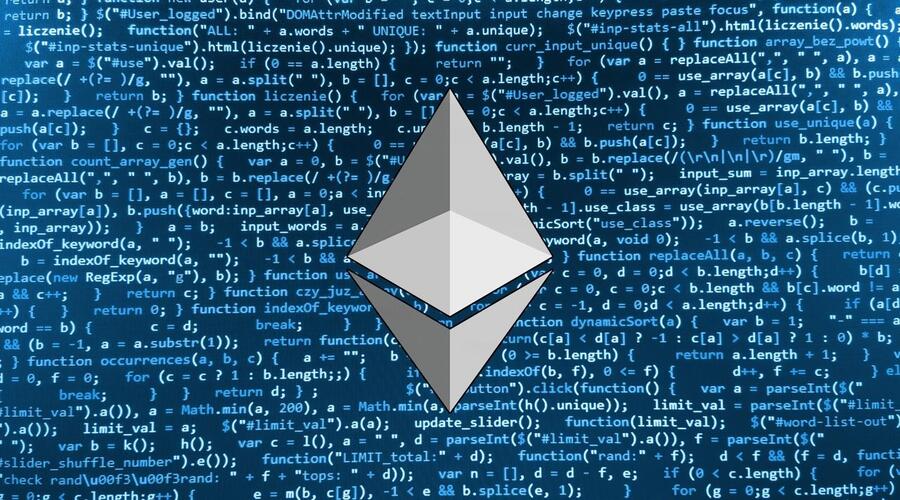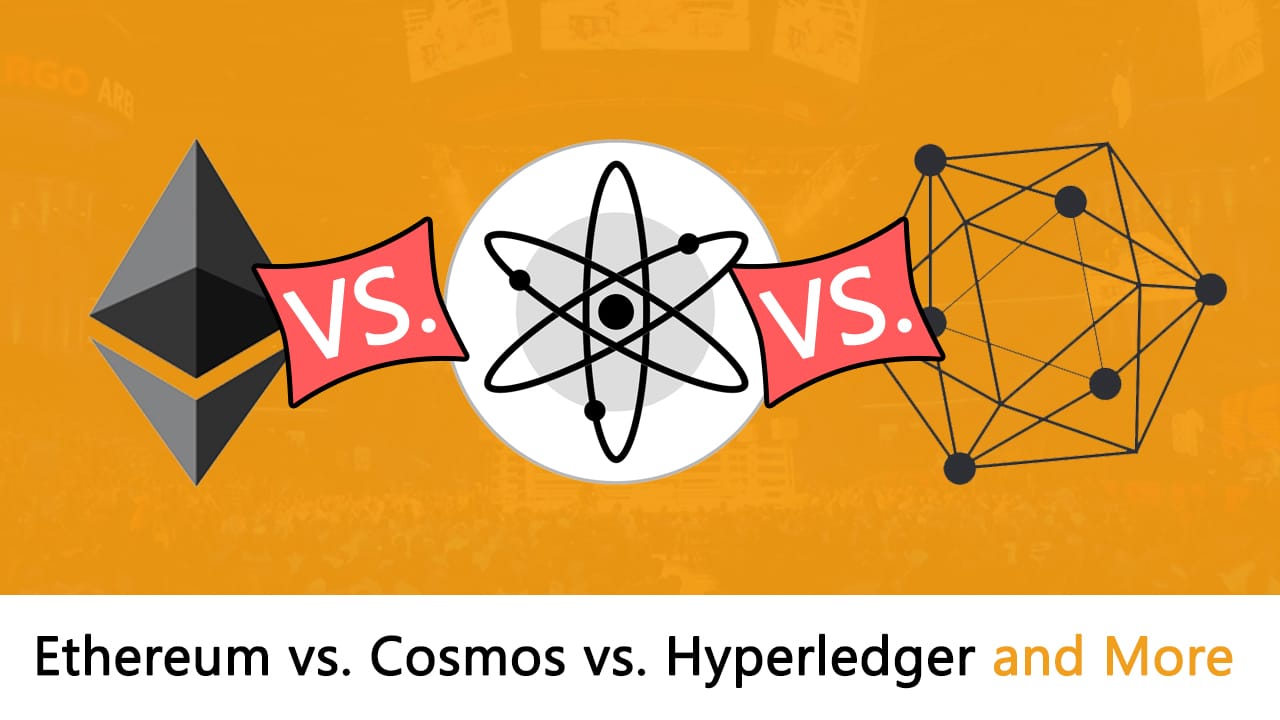Introduction
Ethereum is a decentralized, open-source blockchain platform that enables developers to create decentralized applications (dApps) and execute smart contracts. The Ethereum blockchain is designed to be more than just a currency, unlike Bitcoin, which is primarily used for financial transactions. Ethereum’s focus is on building a decentralized infrastructure for executing code on a distributed network, making it a popular choice for developers building dApps and smart contracts.
What is a Blockchain?
A blockchain is a decentralized digital ledger that records transactions in a secure and transparent manner. It consists of a network of nodes that validate and store data, and each node in the network has a copy of the entire blockchain. Each block in the chain contains a timestamp and a record of transactions that have been verified and confirmed by the network. Once a block is added to the chain, it cannot be altered or deleted.
What are Smart Contracts?
Smart contracts are self-executing programs that run on the blockchain. They are written in a programming language called Solidity, which is specifically designed for the Ethereum blockchain. Smart contracts are used to automate transactions and execute code on the network. They operate autonomously, without the need for intermediaries, and are designed to be transparent, secure, and tamper-proof.
How do Smart Contracts work?
Smart contracts operate on the basis of if-then statements. They contain a set of rules and conditions that are agreed upon by the parties involved in a transaction. Once the conditions are met, the contract is executed automatically. For example, a smart contract could be created to pay a supplier automatically once a certain quantity of goods is received.
The Ethereum Blockchain
The Ethereum blockchain is a decentralized, open-source platform that enables developers to create dApps and execute smart contracts. It was created by Vitalik Buterin in 2013 and launched in 2015. The Ethereum blockchain is based on a consensus mechanism called proof-of-work (PoW), which ensures the security and reliability of the network.
The Ethereum blockchain is unique in that it allows developers to create their own cryptocurrencies or tokens using the ERC standards. The most common standard is ERC-20, which enables developers to create fungible tokens that can be traded on exchanges.
Smart Contracts on the Ethereum Blockchain
Smart contracts are self-executing programs that run on the Ethereum blockchain. They are written in Solidity, a programming language specifically designed for the Ethereum blockchain. Smart contracts are used to automate transactions and execute code on the network. They operate autonomously, without the need for intermediaries, and are designed to be transparent, secure, and tamper-proof.
Smart contracts are stored on the Ethereum blockchain and can be accessed by anyone on the network. They are executed automatically when certain conditions are met, such as the transfer of funds from one account to another.
Ethereum Virtual Machine (EVM)
The Ethereum Virtual Machine (EVM) is a virtual machine that runs on the Ethereum blockchain. It is responsible for executing smart contracts and other code on the network. The EVM is a Turing-complete machine, which means that it can execute any code that can be expressed in code.
The EVM uses a bytecode language called Ethereum Virtual Machine Code (EVM code). Smart contracts are written in Solidity, which is compiled into EVM code before being deployed to the network. When a smart contract is executed, the EVM reads the bytecode and executes the instructions, updating the state of the contract and the blockchain as necessary.
Gas and Gas Fees
Gas is the unit of measurement used to determine the cost of executing a smart contract on the Ethereum blockchain. Gas fees are paid in Ether, the native cryptocurrency of the Ethereum blockchain.
Gas fees are used to compensate miners for the resources they use to execute a smart contract. The more complex the smart contract, the more gas it will require, and the higher the gas fees will be.
Gas fees are determined by the market and can vary depending on network congestion and demand. To reduce gas fees, developers can optimize their smart contracts to be more efficient and use less gas.
Ethereum Improvement Proposals (EIPs)
Ethereum Improvement Proposals (EIPs) are proposals to improve the Ethereum blockchain. They can be submitted by anyone in the Ethereum community and are reviewed by the Ethereum Improvement Proposal (EIP) editors.
EIPs can range from minor improvements to major changes to the Ethereum blockchain. They can address issues such as network congestion, scalability, and security. Once an EIP is approved, it is implemented by developers and added to the Ethereum blockchain.
Examples of EIPs include EIP-1559, which introduced a new fee structure for transactions on the Ethereum blockchain, and EIP-721, which introduced a standard for non-fungible tokens (NFTs) on the Ethereum blockchain.
Ethereum 2.0
Ethereum 2.0, also known as Eth2, is the next major upgrade to the Ethereum blockchain. It aims to improve the scalability, security, and sustainability of the network. Ethereum 2.0 will introduce a new consensus mechanism called proof-of-stake (PoS), which will replace the current proof-of-work (PoW) mechanism.
Proof-of-stake (PoS) is a consensus mechanism where validators are chosen to validate transactions based on the amount of cryptocurrency they hold and are willing to “stake” as collateral. This is in contrast to proof-of-work (PoW), where miners are chosen based on their computing power.
Ethereum 2.0 will also introduce sharding, a technique for partitioning the blockchain into smaller sections called shards. This will improve the scalability of the network by allowing more transactions to be processed in parallel.
Advantages of Smart Contracts on the Ethereum Blockchain
Automation:
Smart contracts can automate the execution of agreements, reducing the need for intermediaries and speeding up the process.
Transparency:
Smart contracts are transparent and tamper-proof, ensuring that all parties have access to the same information.
Security:
Smart contracts are secure and cannot be altered or deleted once they are executed.
Efficiency:
Smart contracts can reduce the time and cost involved in executing agreements.
Decentralization:
Smart contracts operate on a decentralized network, making them more secure and less vulnerable to hacking or manipulation.
Use Cases for Smart Contracts on the Ethereum Blockchain
Decentralized Finance (DeFi):
Smart contracts are used in DeFi applications such as lending, borrowing, and trading. They enable users to interact with financial services without the need for intermediaries.
Supply Chain Management:
Smart contracts can be used to track and manage the movement of goods through the supply chain. They can automate processes such as payment and delivery, reducing the risk of fraud and errors.
Identity Management:
Smart contracts can be used to manage digital identities and authenticate users. They can also be used to secure personal data and protect user privacy.
Gaming:
Smart contracts can be used to create decentralized games that operate on the Ethereum blockchain. These games can offer unique features such as provably fair gameplay and player-owned assets.
Conclusion
The Ethereum blockchain and smart contracts have revolutionized the way we think about applications and agreements. The Ethereum Virtual Machine (EVM) is a powerful tool for executing code on the network, while gas and gas fees ensure that the network remains secure and efficient. Ethereum Improvement Proposals (EIPs) allow the community to propose and implement improvements to the network, while Ethereum 2.0 will introduce major upgrades to improve the scalability, security, and sustainability of the network. With the continued growth and development of the Ethereum ecosystem, we can expect to see even more exciting developments and use cases for the Ethereum blockchain and smart contracts in the future.
I am a highly experienced and successful cryptocurrency author. I have been writing about cryptocurrencies for over 5 years and have seen the industry grow and change immensely. I am well-versed in all things crypto and blockchain, and it can be seen in my writings. My goal is to educate others about this fascinating industry, and to help them make informed investment decisions. I believe that cryptocurrencies are the future of finance, and I am eager to share my knowledge with as many people as possible.



![What is Ethereum? [The Most Updated Step-by-Step-Guide!]](https://therobusthealth.com/wp-content/uploads/2020/05/whatiseth.jpg)
